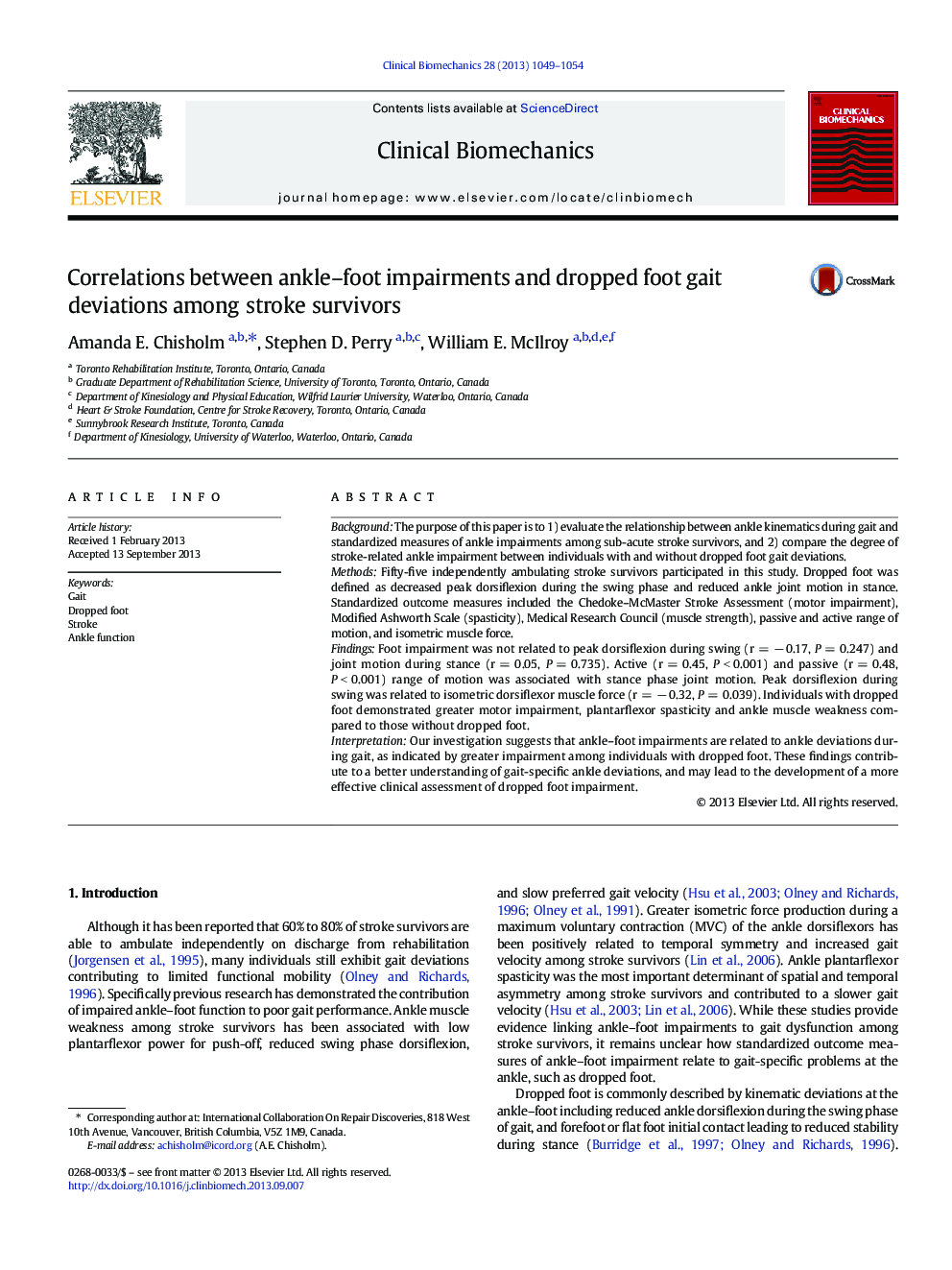| Article ID | Journal | Published Year | Pages | File Type |
|---|---|---|---|---|
| 6204830 | Clinical Biomechanics | 2013 | 6 Pages |
BackgroundThe purpose of this paper is to 1) evaluate the relationship between ankle kinematics during gait and standardized measures of ankle impairments among sub-acute stroke survivors, and 2) compare the degree of stroke-related ankle impairment between individuals with and without dropped foot gait deviations.MethodsFifty-five independently ambulating stroke survivors participated in this study. Dropped foot was defined as decreased peak dorsiflexion during the swing phase and reduced ankle joint motion in stance. Standardized outcome measures included the Chedoke-McMaster Stroke Assessment (motor impairment), Modified Ashworth Scale (spasticity), Medical Research Council (muscle strength), passive and active range of motion, and isometric muscle force.FindingsFoot impairment was not related to peak dorsiflexion during swing (r = â 0.17, P = 0.247) and joint motion during stance (r = 0.05, P = 0.735). Active (r = 0.45, P < 0.001) and passive (r = 0.48, P < 0.001) range of motion was associated with stance phase joint motion. Peak dorsiflexion during swing was related to isometric dorsiflexor muscle force (r = â 0.32, P = 0.039). Individuals with dropped foot demonstrated greater motor impairment, plantarflexor spasticity and ankle muscle weakness compared to those without dropped foot.InterpretationOur investigation suggests that ankle-foot impairments are related to ankle deviations during gait, as indicated by greater impairment among individuals with dropped foot. These findings contribute to a better understanding of gait-specific ankle deviations, and may lead to the development of a more effective clinical assessment of dropped foot impairment.
